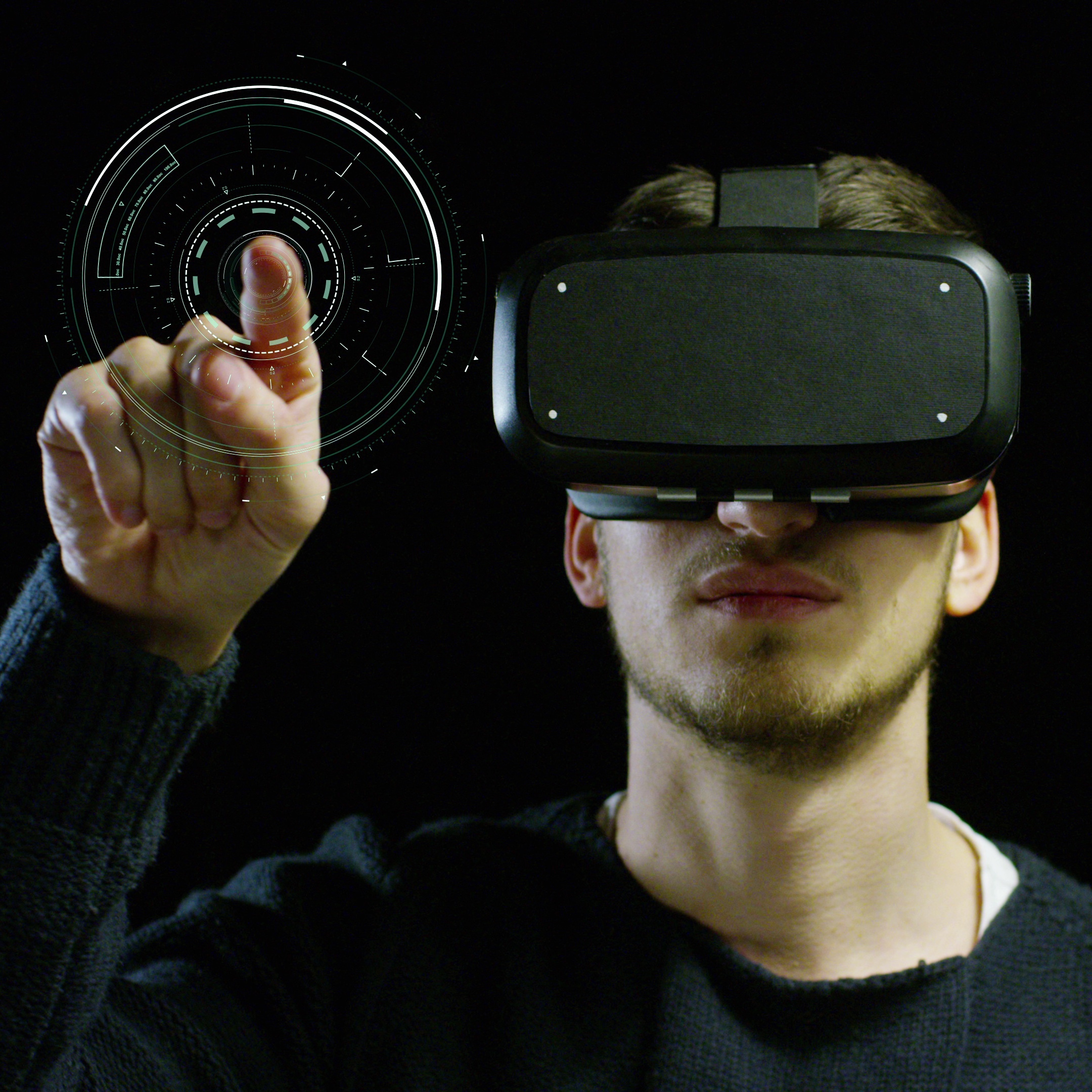From 2D to 3D: The Rise of XR Typography in Modern Design
Typography, the art and technique of arranging type, has been integral to human communication since ancient civilizations first carved symbols into stone. From the meticulous craftsmanship of hand-drawn letters in medieval manuscripts to the pixel-perfect digital fonts we use today, typography has continually evolved to reflect the changing mediums of its time. Enter Extended Reality (XR) – a ground-breaking technology that overlays digital content onto the real world, transforming how we perceive and interact with information.
XR’s transformative potential is undeniable. Its applications are vast and growing rapidly, from gaming and entertainment to healthcare and education. Industries worldwide are harnessing XR’s power to create immersive experiences that captivate audiences like never before. At the heart of these experiences lies typography, now elevated from the flat confines of paper and screen to the dynamic, three-dimensional spaces of XR.
One stellar example of this evolution is OMSE’s Campaign for Printworks. This innovative campaign showcased the immense potential of AR typography, creating a buzz and drawing audiences into an immersive typographic experience. Such initiatives underscore the revolutionary shift in how typography is perceived and utilized in the modern design landscape.
Navigating the Three-Dimensional Canvas: Understanding the Nuances of XR Typography
What was once confined to flat, two-dimensional spaces has now leaped into the dynamic world of 3D, offering a spatial depth that was previously unimaginable.
From Flat to Spatial: A Dynamic Leap
The journey of typography from its traditional 2D form to the immersive 3D spaces of XR is nothing short of revolutionary. In the past, typography was constrained to flat surfaces on paper, billboards, or digital screens. The primary concern was legibility, aesthetics, and conveying a message. However, with XR, typography has broken free from these two-dimensional shackles. It now exists in a spatial context, where the type can float, rotate, and interact with the user and the environment. This transition from static to dynamic offers designers a new playground to experiment with depth, perspective, and motion, creating a more engaging user experience.
Deciphering the Spatial Regions in AR Typography
In the realm of XR, understanding the spatial context is paramount. The space around a user can be broadly categorized into:
- ● Heads-up Display (HUD): This is the immediate visual forefront, akin to a dashboard, displaying critical information directly in the user’s line of sight.
- ● UI Region: This interactive zone allows users to engage with various XR elements, from menus to interactive buttons. Typography here must be clear, legible, and intuitive, guiding users through their AR journey.
- ● Environment Region: This encompasses the broader XR space where textual elements seamlessly blend with the real world. Typography might appear on walls, float in the air, or even trail a moving object.
For effective XR typography, designers must consider factors like the visual appeal of the typeface, its appropriateness for the medium, and its utility in a given situation. For instance, a decorative font might work well for a brand logo in the environment region but may not be suitable for a HUD display showing critical information.
The Power of Engagement: Psychological Impacts of XR Typography
XR typography does more than just present information; it immerses users. This immersion leads to heightened emotional and cognitive engagement. When users can interact with text and see it respond to their movements, it creates a deeper connection. Studies suggest immersive experiences can lead to better retention and increased engagement rates. The psychological impact is profound, transforming passive viewers into active participants.
Brands Riding the XR Typography Wave
XR typography has emerged as a powerful tool for brands to connect with their audience in novel, immersive ways. For instance, brands like Nike have used XR typography in their campaigns, allowing users to interact with the brand message in real-time. Restaurants leverage XR menus, where dishes float before the user, offering a visual treat before the feast. Such applications enhance the user experience and create a memorable brand impression, driving loyalty and engagement.
Navigating the Challenges
Merging XR with typography opens new avenues in design, but it has its challenges. Let’s delve into the challenges and potential solutions in this evolving field.
Designing for the Augmented Space:
XR typography extends beyond traditional design paradigms. Maintaining legibility becomes paramount in a dynamic environment where text overlays on varied real-world backgrounds. Consider a bustling city street or a serene park; the typography must remain clear irrespective of the backdrop.
As users navigate this augmented space, the text must adapt. If a user moves closer to an XR signpost, does the text enlarge for emphasis or shrink to maintain a consistent view? How does typography respond when users shift their gaze or change their viewing angle? Additionally, the depth perception in XR introduces another layer of complexity. The text might float close to the user or appear anchored to a distant building. Designing for such fluidity and depth while ensuring legibility and aesthetics is a nuanced challenge unique to XR.
Technological Considerations:
The diversity in XR devices presents its own set of challenges. A design that looks impeccable on a high-end AR headset might appear distorted on a mid-range smartphone. Each instrument, with its unique specifications, demands a tailored approach.
For instance, while a powerful AR headset might effortlessly render high-resolution, animated typography, a smartphone might need help with such complexity, leading to laggy or subpar experiences. This technological variance means designers often have to create multiple versions of typography optimized for different devices. The goal is a consistent user experience, irrespective of the device, but achieving this uniformity amidst such technological disparity is daunting.
User-Centric Design:
XR offers users an immersive, interactive experience, a stark departure from the passive consumption of content on traditional screens. This shift necessitates a deeper understanding of user behavior in these environments.
For example, prolonged reading on augmented platforms might lead to fatigue, so how do designers ensure comfort over extended periods? How do you design typography that responds to user gestures, like zooming in for a closer look or swiping away unwanted text? With multi-dimensional movements, user interactions become more intricate. The typography must be visually appealing and intuitive to interact with, enhancing the overall user experience.
Incorporating feedback, studying user interactions, and iterative design are crucial. We can only create XR-based typography that is visually stunning and functionally impeccable by centering the user.
Typography Reimagined: What Lies Ahead in the XR Era
“Typography is a two-dimensional architecture, based on experience and imagination, guided by readability.” In the realm of XR, it transcends dimensions, crafting experiences that are immersive, contextual, and deeply personal,” echoes Ami Sanghvi, Head of Creative Design at Magineu, echoing the sentiments of typography legend Hermann Zapf.
The intersection of Extended Reality (XR) and typography is more than just a technological marvel; it’s a testament to how design adapts and evolves with time. As we delve deeper into this convergence, several trends and predictions emerge, painting a vivid picture of the road ahead.
Emerging Trends: Personalized XR typography is on the horizon. Envision a world where digital content isn’t just generic but tailored to individual preferences. An advertisement that speaks directly to you or a news app that adjusts its typography based on your reading habits. This isn’t mere customization; it’s a deep-rooted personalization powered by AI and machine learning. Beyond personalization, the adaptability of XR typography is gaining traction. Context-aware designs that adjust font brightness and size in response to environmental factors like ambient light are becoming more prevalent. This ensures optimal readability and enhances user experience, making XR typography more intuitive and user-friendly.
The potential of XR typography stretches far and wide. Industries across the board, from retail to education, will soon harness its capabilities to offer enriched user experiences. For designers, this is uncharted territory filled with opportunities. The challenge? Balancing innovation with usability. As XR typography becomes more mainstream, there will be a need for new design principles, guidelines, and perhaps even typefaces crafted specifically for XR environments.
In wrapping up our exploration of XR typography’s future landscape, it’s fitting to reflect on the words of Hermann Zapf, a luminary in the world of typography.



